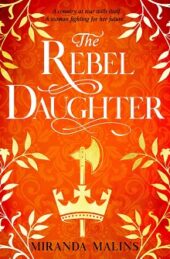Nadine Akkerman, when first approaching this project, what was your understanding of Elizabeth Stuart and what, as a biographer, drew you to her?

Elizabeth Stuart
My first tussle with Elizabeth Stuart came about when I heard of her love for the theatre – I teach English literature, and started looking through her correspondence in the hope of finding something new about Shakespeare. As it turned out, she hardly ever mentions the theatre, because her letters are full of real politics, diplomacy, treaties, battles and the like. What was even more exciting was that her voice was so unusually clear and confident. She’s a biographer’s dream, and I was soon hooked!
One of the things which is historically less discussed about Elizabeth is her childhood and upbringing. How do you think her being raised as a prototypical British Protestant princess – a successor to Queen Elizabeth – shaped her perception of the world, and who do you think was behind her early fashioning?
Of course, it’s unlikely that Elizabeth could have remained unaffected by being named after the queen her father hoped to succeed, and by the time she was nine years old she was actively encouraging her identification with her namesake, imitating her hairstyle, copying her signature and wearing her jewellery. But for the first seven years of her life she lived in a household whose mistress was Catholic, much to the chagrin of the Kirk, quite possibly in order to increase her eligibility to European Catholic royalty – it was certainly commented upon by European diplomats. By the time of her marriage to Frederick V she was deeply committed to the Protestant faith, however, and much of the populace saw her not merely as the heir to the virgin queen’s mythos, but as the most credible heir to her father’s crown – indeed, she came close to assuming it in 1623.
Those who know about Elizabeth will know of the famous quote attributed to her: “I would rather be the Palsgrave’s wife than the greatest papist Queen in Christendom”. Do you think, historically, her reputation has been romanticised as the “royal wife” rather than a woman of agency? If so, why?
This is an excellent example of how Elizabeth’s reputation has been managed over the centuries. It is part of an alleged conversation with her mother, who wanted Elizabeth to marry King Philip III of Spain rather than become the ‘Goodwife Palsgrave’ by marrying Frederick. It has several weaknesses. The first is that this response was noted by an author in 1697, eighty five years after it allegedly occurred! Furthermore, it shows how the English, both then and perhaps still, fundamentally misunderstand the make up of the Holy Roman Empire. Frederick was, in fact, the most powerful of the Empire’s seven Electors. Anna, with many dynastic links to the Habsburgs (the family that ruled the Empire in the shape of the Emperor himself), would not have made such an error. The exchange is almost certainly apocryphal. As for Elizabeth being cast as a mere ‘royal wife’, and thus a tragic figure tossed hither and thither on the high seas of fortune, this merely demonstrates the many misconceptions over the agency of queen consorts in the early modern period. Yes, they operated within certain restrictions due to their sex, but their ability to circumvent them is underestimated. This is largely down to the lack of access to the correspondence of any of the Stuart queens. Without clearly annotated editions of their letters, how can we hope to appreciate their true political efforts?

Frederick V
Many people are not aware of Elizabeth Stuart’s importance in the succession in 1714 – were any of her characteristics inherited by her Hanoverian descendants?
That’s not my place to say. Whether any of her Hanoverian descendants (she was the grandmother of George I) inherited her intelligence, feistiness, stubbornness, wit, inflexibility, and charisma, I leave to the historians of the Hanoverian period to decide.
You mention in your introduction that your biography seeks a new perspective (one historian previously stated ‘Elizabeth defied neither the social boundaries prescribed by her station nor the conventional role of wife and mother’) – could tell us a bit more about that?
Statements such as this are infuriating, and fueled, whether wittingly or not, by misogyny. And yet you still hear her accused of igniting the Thirty Years’ War! Neither statement bears up to scrutiny, wilting in the face of her correspondence, which shows just how she both defied social boundaries (when it suited her needs) and ranged far beyond the ‘conventional role of wife and mother’ in her communications with her network – which included European kings and queens, the generals fighting in the war (on both sides), diplomats and courtiers. Everyone thinks they know her, but so few of her many thousands of letters were read by anyone other than their recipient that she has remained an enigma – until now!
English monarchs’ adoration of their pet canines over their children is not unusual, but is this caricature of Elizabeth?
It’s perhaps less a caricature of Elizabeth than yet another example of a woman’s pets being used as a way of trivialising her. You rarely see the same tactics used against a man. No one makes fun of James’s armadillo, and Prince Rupert’s dog Boye (who died at Marston Moor) is always presented as his faithful companion – and I’m willing to bet that few readers have heard of his coat-wearing she-monkey who allegedly accompanied him into battle and was, like Boye, featured in her own pamphlet! The fact is that menageries were all the rage. The idea that Elizabeth preferred the company of her pet monkeys and dogs to that of her offspring’ is a satirical quote taken out of context to suggest that she was a bad, uncaring mother. The truth is that she wrote lovingly about all of her children, and mourned those who died intensely. And we mustn’t forget that she devoted her life to regaining their birthrights.
You’ve described her as feisty, and she certainly didn’t mince words (I’m thinking of her admonishment of Georg, Duke of Brunswick-Lüneburg) – but could one argue she was let down by many of the men in her life?
Elizabeth did curse her father’s overcautious nature, but both her father James VI/I and brother Charles I tried far harder to help her than she perhaps realised, and tens of thousands of Britons served her cause on the continent. On the other hand, the men in her life did let her down by dying, and her son Charles Louis certainly pulled the rug from under her in various ways during her later years.
Finally, having completed this biography, what are you turning to now?
I tend to be working on several projects at any one time, but none of them is mature enough for me to spill the beans on quite yet …
Dr Nadine Akkerman is an archival detective, biographer, cryptographer, editor and spymistress. An acclaimed literary historian, she is the award-winning author of Invisible Agents. Elizabeth Stuart: Queen of Hearts is her latest book, out now, and published by Oxford University Press.
Steven Veerapen is a writer and academic and author of The Queen’s Gold.
Aspects of History Issue 7 is out now.
Andrew Lambert







